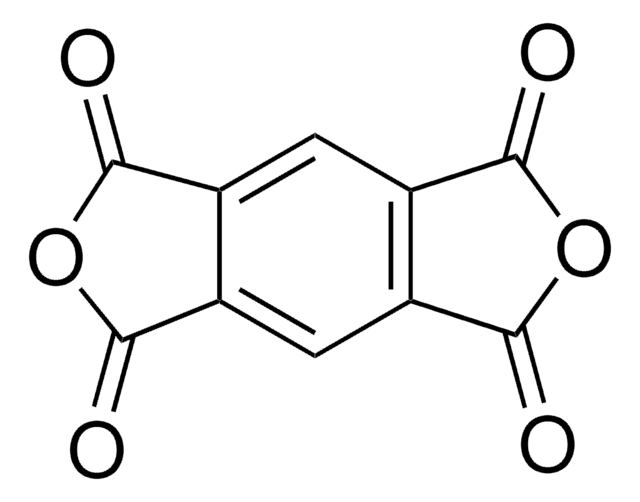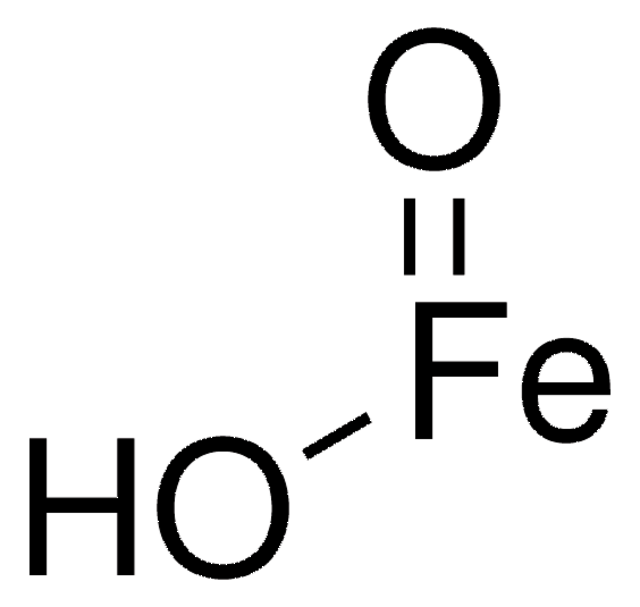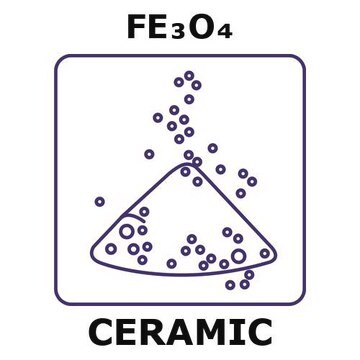518158
Iron(II,III) oxide
99.99% trace metals basis
Sinónimos:
Ferrosoferric oxide, Iron oxide black, Magnetite
About This Item
Productos recomendados
Quality Level
assay
99.99% trace metals basis
form
powder
mp
1538 °C (lit.)
density
4.8-5.1 g/mL at 25 °C (lit.)
application(s)
battery manufacturing
SMILES string
O=[Fe].O=[Fe]O[Fe]=O
InChI
1S/3Fe.4O
InChI key
SZVJSHCCFOBDDC-UHFFFAOYSA-N
¿Está buscando productos similares? Visita Guía de comparación de productos
Categorías relacionadas
General description
Application
- Achieving Excellent Dielectric and Energy Storage Performance in Core-Double-Shell-Structured Polyetherimide Nanocomposites.: This study explores the development of polyetherimide nanocomposites incorporating Iron(II,III) oxide for enhanced dielectric properties and energy storage capabilities, showing potential for advanced electrical applications (Yuan et al., 2023).
Storage Class
11 - Combustible Solids
wgk_germany
nwg
flash_point_f
Not applicable
flash_point_c
Not applicable
ppe
dust mask type N95 (US), Eyeshields, Gloves
Elija entre una de las versiones más recientes:
¿Ya tiene este producto?
Encuentre la documentación para los productos que ha comprado recientemente en la Biblioteca de documentos.
Los clientes también vieron
Artículos
An article concerning self-propagating reactions induced by mechanical alloying, presented by Sigma-Aldrich.com.
Magnetism and magnetic materials have been of scientific interest for over 1,000 years. More recently, fundamental investigations have focused on exploring the various types of magnetic materials and understanding the magnetic effects created by electric currents.
Magnetic materials permeate numerous daily activities in our lives. They are essential components of a diversity of products including hard drives that reliably store information on our computers, decorative magnets that keep the shopping list attached to the refrigerator door, electric bicycles that speed our commute to work, as well as wind turbines for conversion of wind energy to electrical power.
Global Trade Item Number
| Número de referencia del producto (SKU) | GTIN |
|---|---|
| 518158-50G | 4061832542072 |
| 518158-10G | 4061832542065 |
Nuestro equipo de científicos tiene experiencia en todas las áreas de investigación: Ciencias de la vida, Ciencia de los materiales, Síntesis química, Cromatografía, Analítica y muchas otras.
Póngase en contacto con el Servicio técnico






